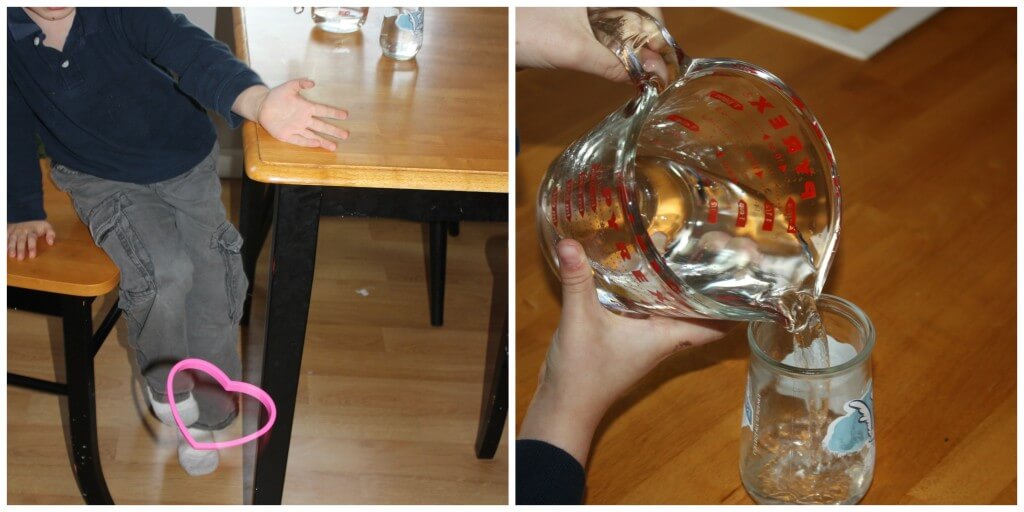

Repeat two more times, so you have a total of three trials. Record the rebound height in a data table, like the one below. Have the volunteer release the ball while you observe the ball's collision with the floor and observe its rebound height.The ball should be held slightly away from the wall, so that it doesn't hit any molding when you drop it, but close enough so that you can observe the ball's rebound height based on the markings on the wall. Have the volunteer hold one of the balls at the 6-inch mark on the paper.Using your measuring device and a pencil (and a chair or stool, if necessary), mark and label every inch of your paper, from the floor up, until you have reached the top of the covered wall area.Tape paper to the wall until an area about 6 feet high and 2 feet wide is covered.The wall must stand beside a hard floor and you will need to use tape on the wall. Ask your parents what wall you can use for your experiment.When you drop a bouncy ball, why doesn't it return to the height from which it was released?.What happens to a moving ball when it collides with a hard surface?.So, let the bouncing begin! Terms and Concepts You will also see if the relationship between the dropped height and the rebound height is linear by evaluating a graph. In this physics science fair project, you will explore the rebound heights for different balls and determine their maximum limits. The ball follows the conservation of energy law. The sum of all these small energy losses means that the rebound height of the ball cannot reach the original height of the ball. In addition, during the collision with the floor, you hear that classic "bouncy sound." Creating sound also results in a small energy loss. In both cases, the ball is changing its shape and that warms the ball slightly, producing an energy loss. Another energy loss arises when the ball strikes and rebounds from the ground.

This warms up both the ball and the air slightly, resulting in a small energy loss. When the ball is moving through the air (both up and down), the air molecules collide with it, creating resistance to motion. In the real world, there are small energy losses at every stage of the ball's journey. The stored elastic potential energy is transformed into kinetic energy and the ball "rebounds." The kinetic energy is then gradually transformed into gravitational potential energy once again.Īn ideal, perfectly elastic ball operating in a vacuum would rebound back to its original height, but real-world balls are not perfectly elastic, and, thankfully, we don't live in a vacuum. The ball then releases this stored potential energy as it returns to its original shape. In this deformation, the kinetic energy gets transformed and stored as elastic potential energy within the ball. When the ball hits the ground, it is deformed (just as when it was hit with a bat). Gravitational acceleration is 9.81 meters per second squaredĪs you release the ball, that potential energy is transformed into kinetic energy (remember, the energy of motion). Gravitational potential energy is in joules (J) or newton meters ( N Mass × Gravitational acceleration × Height This drawing shows the transfers of energy that occurs when a bouncy ball is dropped onto a hard surface.Īs shown in Equation 1, the ball has a gravitational potential energy that is equal to the mass of the ball, times the acceleration due to gravity, times the height above the surface. In the fourth time frame, the ball has lost all its kinetic energy, returned to its spherical shape, and has reached its final rebound height, which is lower than its start height, displaying a new gravitational potential energy.įigure 1. In the third time frame the ball is still in an egg shape on the ground, but is starting its rebound, the elastic potential energy is becoming kinetic energy again.

At the second time frame, the ball has been released and has contacted the surface and been squashed into an egg shape, displaying kinetic energy that has been transformed into elastic potential energy. At the start time, the ball is held by a hand above a surface, displaying gravitational potential energy about to turn into kinetic energy. Drawing shows a bouncy ball at four different stages as it is dropped and bounces off of the ground.


 0 kommentar(er)
0 kommentar(er)
